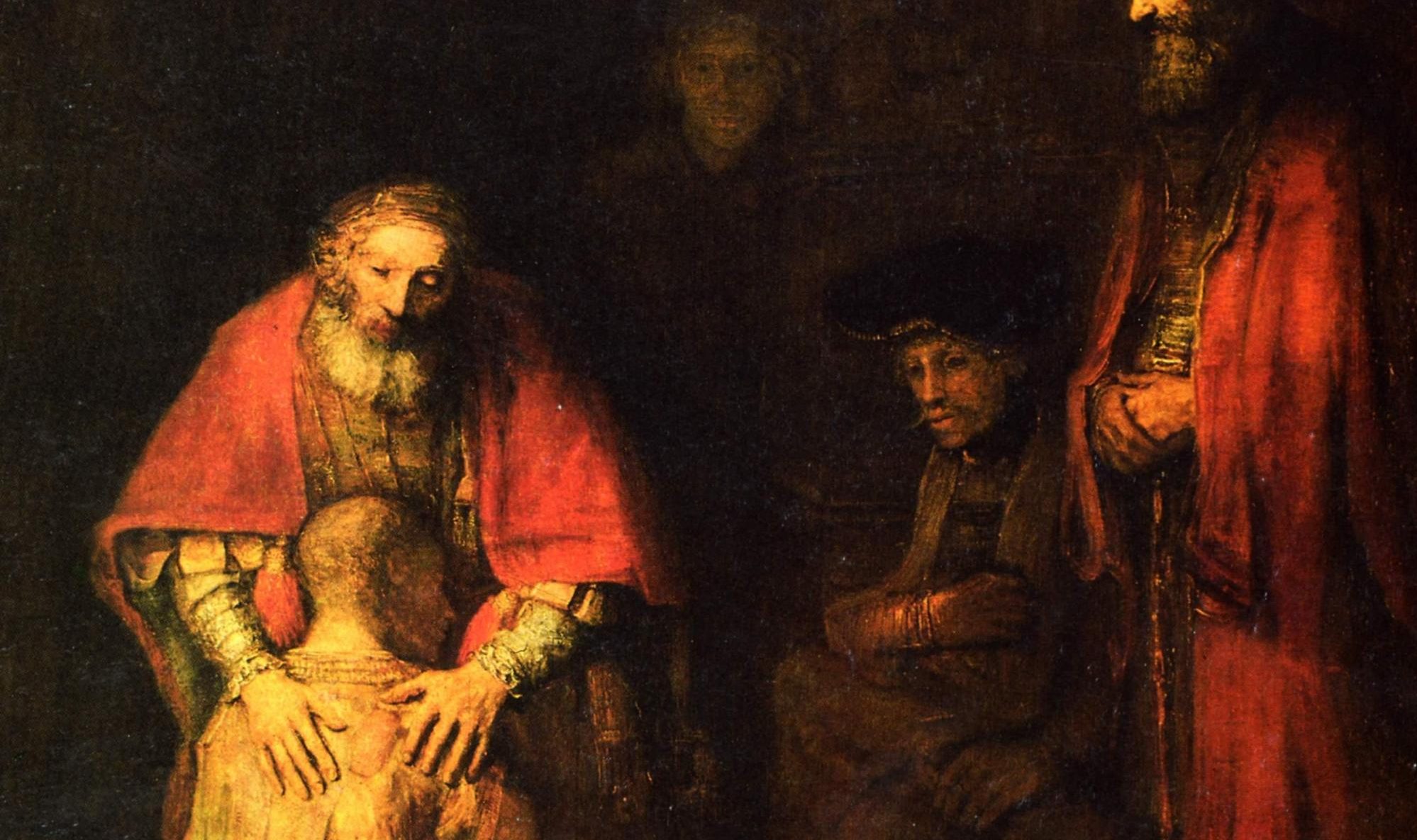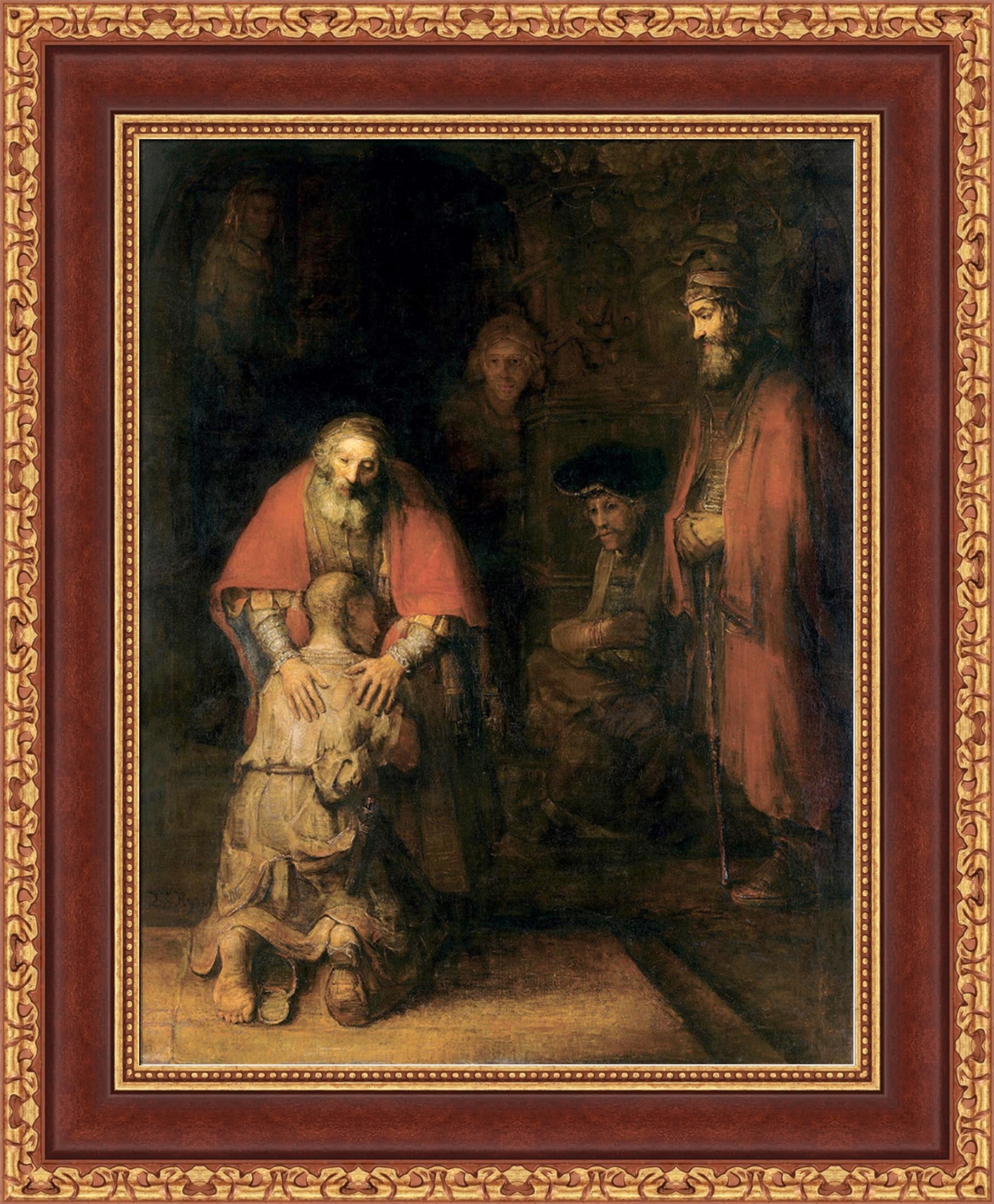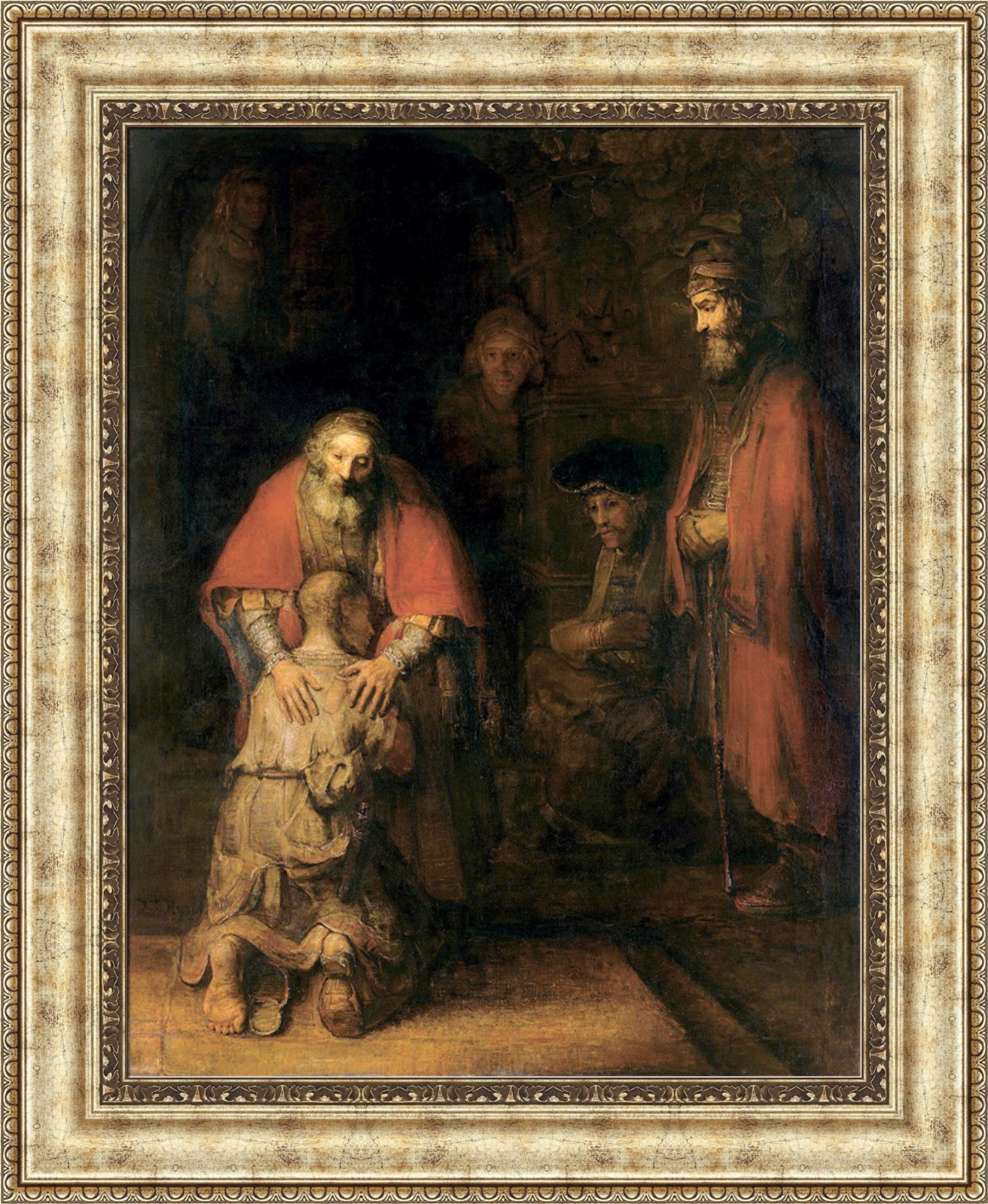
Rembrandt’s Prodigal A Life Lesson
The Return of the Prodigal Son is currently held in The Hermitage Museum in St Petersburg, Russia. Rembrandt van Rijn (1606-1669) - most commonly referred to simply as Rembrandt - was a famous Dutch painter in the 17th century. He is considered one of the greatest visual artists of all time for mastering painting, draughtsman and printmaking.

Rembrandt The Return of the Prodigal Son, 1668 Art in Detail Tutt'Art Pittura
The Return of the Prodigal Son is one of Rembrandt's final paintings completed in the year 1669. This oil painting is based on the Biblical parable of the Prodigal Son, also known as the parable of the two brothers. This chapter appears in the Gospel of Luke, chapter 15. This Baroque masterpiece is now at the Hermitage Museum, Russia.

Rembrandt's Painting The Return of the Prodigal Son Rachel Shockey Studio
Amuze Art Lecture #3: A detailed discussion of The Return of the Prodigal Son, painted by Rembrandt in 1668/1669.This work is on display in the Hermitage Mus.

Rembrandt The Return of the Prodigal Son, 1668 Art in Detail Tutt'Art Pittura
The Return of the Prodigal Son is one of Rembrandt's masterpieces. This painter is renowned for his various works of art that are related to history or to biblical stories, and The Return of the Prodigal Son is considered to be one of his best pieces. This is an oil on canvas painting which he completed shortly before dying in 1669.

Pin on Rembrandt!
The Return of the Prodigal Son ( Dutch: De terugkeer van de verloren zoon) is an oil painting by Rembrandt, part of the collection of the Hermitage Museum in St. Petersburg. It is among the Dutch master's final works, likely completed within two years of his death in 1669. [1]

Rembrandt The Return of the Prodigal Son, 1668 Art in Detail Tutt'Art Pittura
says Rembrandt at a young age "had all the characteristics of the prodigal son: brash, self-confident, spendthrift, sensual, and very arrogant" (page 26 hc/30 sc). The artist earned a lot, spent a lot, and lost a lot. The painting is about the "return" of the lost son. In order to "return", one must have left something behind.

FileRembrandtThe return of the prodigal son.jpg Wikimedia Commons
"The Return of the Prodigal Son" by Rembrandt van Rijn (1606-1669). Photo: Google Art Project/Public Domain. Rembrandt van Rijn was the greatest painter of the Dutch Golden Age — and to some, of any age. Known as both the "painter of light," and an astute observer of the human spirit, the artist used his unsurpassed technical skills.

Return of The Prodigal Son, c.1668 by Rembrandt Van Rijn Art Print, 18 x 24 inches
Details Title: Return of the Prodigal Son Creator: Rembrandt Harmensz van Rijn Creator Death Place: Amsterdam, the Netherlands Creator Birth Place: Leiden, the Netherlands Date Created:.

Rembrandt Van Rijn The Return of the Prodigal Son Painting Reproductions, Save 5075, Free
Dimensions: 206 x 262 cm Order Oil Painting reproduction Wikipedia article References The Return of the Prodigal Son is an oil painting by Rembrandt. It is among the Dutch master's final works, likely completed within two years of his death in 1669.

Rembrandt The Return of the Prodigal Son, 1668 Art in Detail Tutt'Art Pittura
The Return of the Prodigal Son is an oil painting by Rembrandt, part of the collection of the Hermitage Museum in St. Petersburg. It is among the Dutch master's final works, likely completed within two years of his death in 1669. Depicting the moment of the prodigal son's return to his father in the Biblical parable, it is a renowned work described by art historian Kenneth Clark as "a picture.

Rembrandt The Return of the Prodigal Son, 1668 Art in Detail Tutt'Art Pittura
"The Return of the Prodigal Son" is among Rembrandt's final works, completed within two years of his death in 1669. The painting includes figures not related to the parable but seen in some of these earlier works. The woman at top left, barely visible, is likely the mother, while the seated man, whose dress implies wealth, maybe a friend.

Rembrandt The Return of the Prodigal Son Framed Canvas Print 22"x27" (V0631) eBay
A chance encounter with a reproduction of Rembrandt's The Return of the Prodigal Son catapulted Henri Nouwen on an unforgettable spiritual adventure. Here he shares the deeply personal and resonant meditation that led him to discover the place within where God has chosen to dwell.

The Return of the Prodigal Son (Rembrandt) Wikipedia
The Met's collection of drawings and prints—one of the most comprehensive and distinguished of its kind in the world—began with a gift of 670 works from Cornelius Vanderbilt, a Museum trustee, in 1880. Timeline of Art History Chronology Low Countries, 1600-1800 A.D. Resources for Research

Rembrandt, The Return of the Prodigal Son Hermitage Museum, St. Petersburg Caravaggio, Art
The Return of the Prodigal Son, 1669 by Rembrandt The Return of the Prodigal Son is among the Rembrandt's final works, likely completed within two years of his death in 1669.

Rembrandt The Return of the Prodigal Son Framed Canvas Print 22"x27" (V0631) eBay
1. It was one of the final paintings that Rembrandt ever worked on Rembrandt Harmenszoon van Rijn was born in 1606, a time now referred to as the Dutch Golden Age. Also known as the "Dutch Miracle," this was a period in which the Dutch Republic was one of the most advanced nations in the world.

Rembrandt_Return_Prodigal_Son Rembrandt, Fils prodigue, Musée de l'ermitage
Rembrandt van Rijn's The Return of the Prodigal Son is, by far, one of the most evocative of these "visual homilies." One cannot be left unmoved before this unforgettable image, permanently housed at the Hermitage Museum in St. Petersburg, Russia.